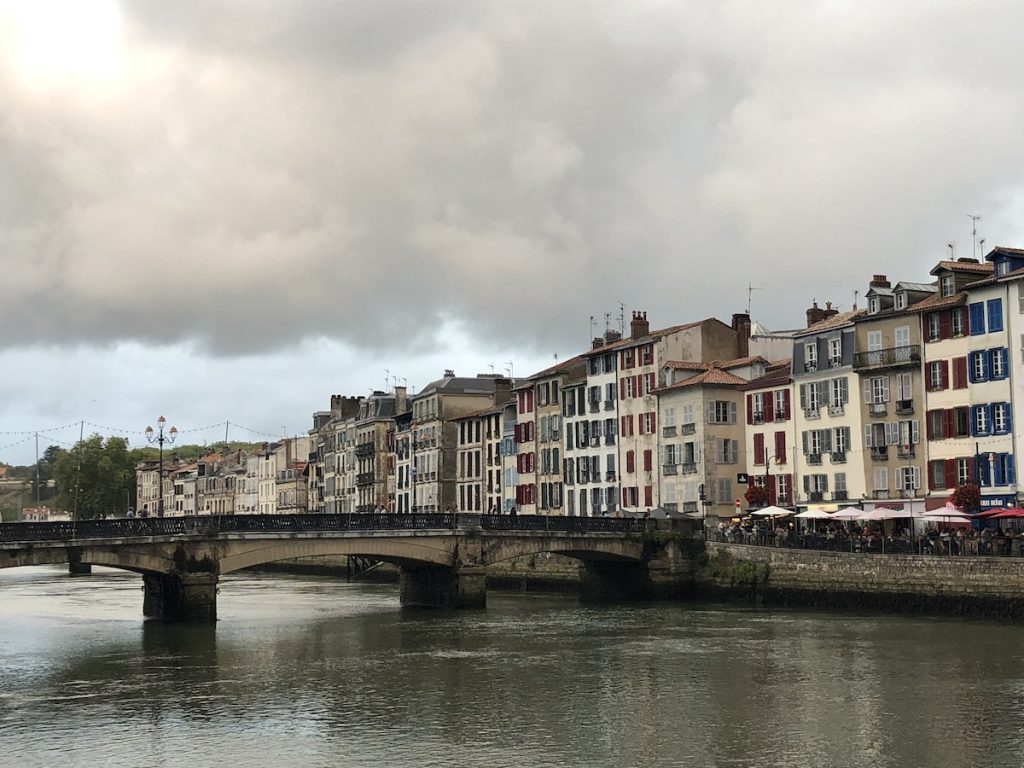
I spent my last Basque days in Bayonne, where tall half-timbered buildings reflect their greens and reds in the Nive and Adour rivers.
The riverside has a Middle Ages feel about it. It’s easy to imagine those same narrow buildings gazing down at the water traffic that made the city such an important commercial centre from its early days as Roman Lapurdum through a brief occupation by Viking raiders to the French Duchy of Gascony.
The English held it for three centuries too, from the 1169 rule of Richard the Lionheart to the final years of the Hundred Years War.
The church saw so many of them come and go. Construction of the present gothic Sainte Marie Cathedral began in the early 13th century and was completed at the beginning of the 17th, a remarkable multi-generational act of devotion.
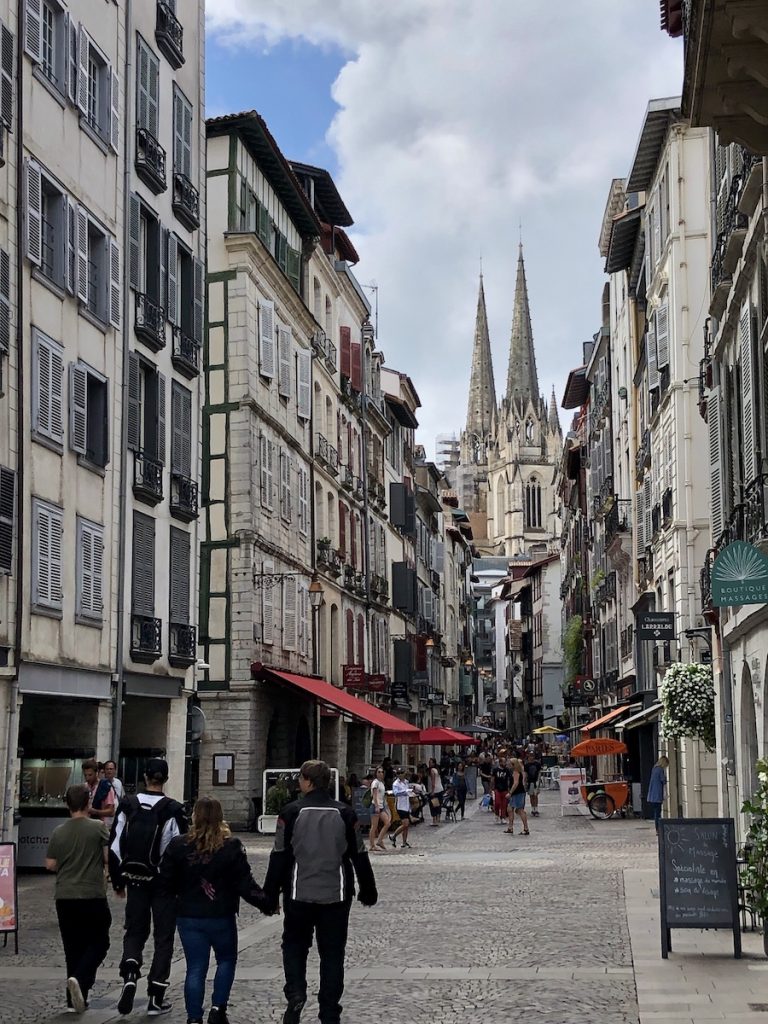
Its twin spires rise above Grand Bayonne, and above the Camino de Santiago, the 10th century pilgrimage route that runs from the Pyrenees to the western tip of Spain and is now a popular walking trail for backpackers.
The cloister next to the cathedral is even older, dating back to 1240. Its entrance is just around the corner from the Place Pasteur, where magnolia trees cast gentle shade over old men in Basque berets. But it was closed for renovation, with only glimpses to be had through a hole cut in construction fencing.
Commerce put Bayonne on the map thanks to its rivers and access to the sea. The town’s bustling armaments industry even gave its name to a weapon still in use today: the ‘bayonet’.
The confluence forms the heart of the city, dividing its centre into three main districts where lively riverside bars and bistros provide pedestrian fuel for window shoppers in lively old town streets.
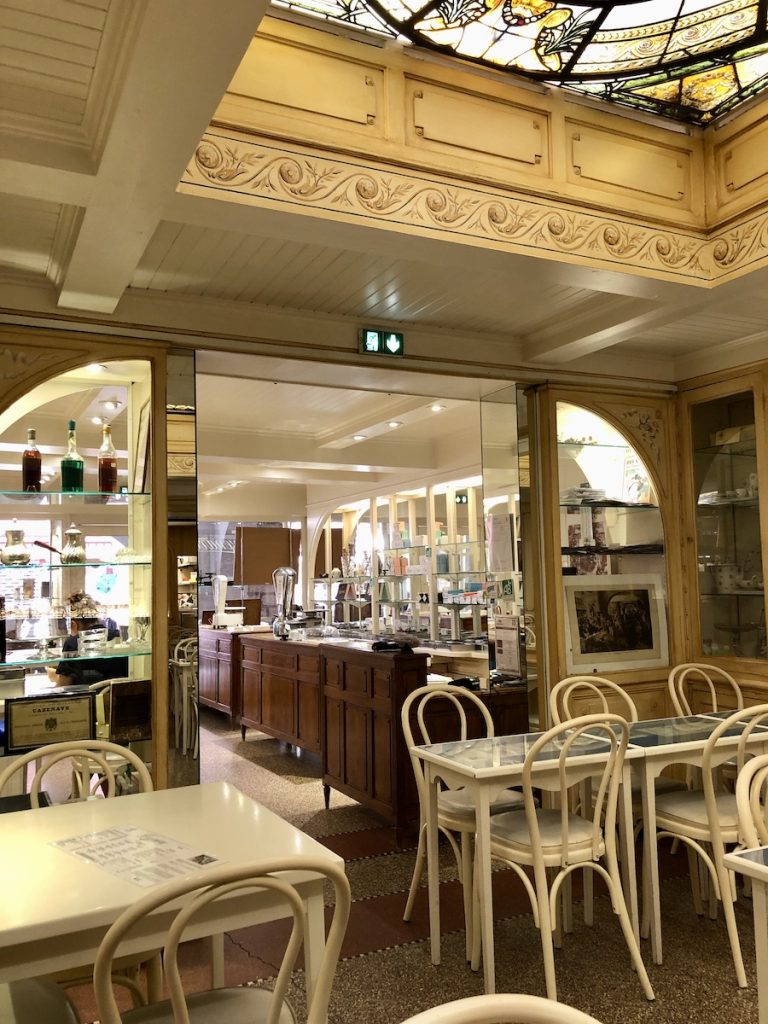
Today, when we think of Bayonne we think of local ham and chocolate. The dark art of confections with cocoa was brought to the city in the 16th century by Sephardic Jews expelled from Spain by the Alhambra Decree of Ferdinand and Isabella, and by those fleeing the Portuguese Inquisition.
I had an opportunity to sample these wares at one of the city’s oldest establishments, Chocolate Cazenave, where the house speciality is Le Mousseaux: chocolat au lait moussé a la main, served with un petit pot de chantilly and a side of buttered toast.
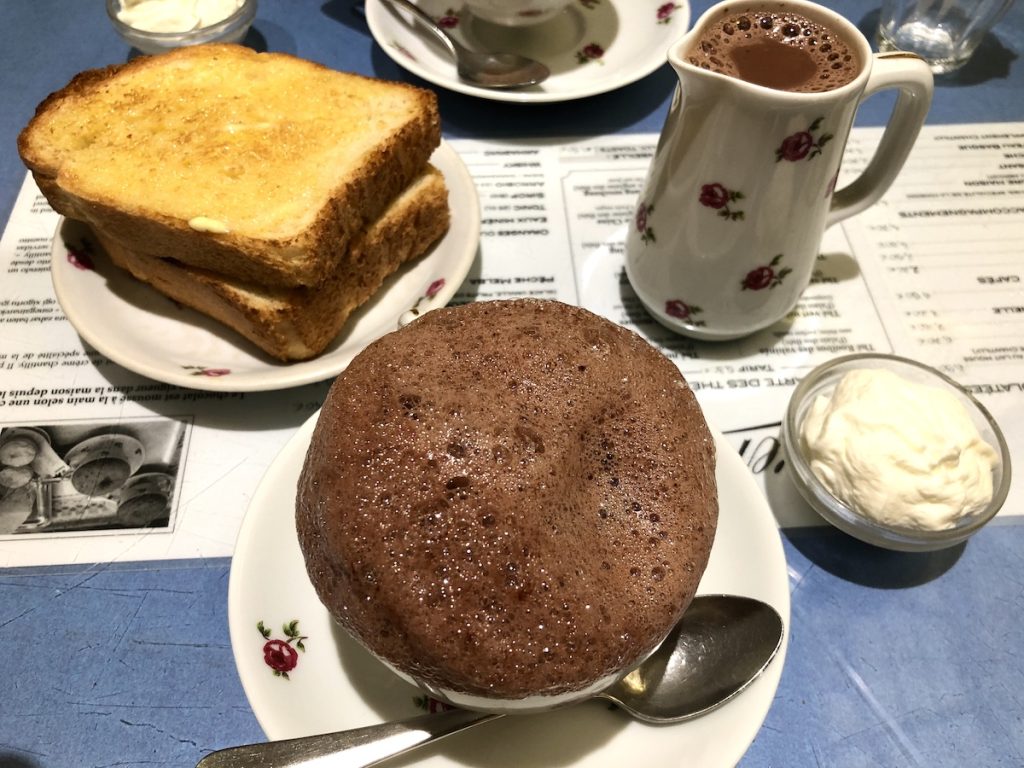
But what I remember most about Bayonne is glasses of wine in busy riverside cafes, and outstanding food at prices a fraction of what was charged in nearby Biarritz.
I liked to lay the foundation with a glass of Suze, an appetite stimulating bitter flavoured with the roots of the gentian plant.
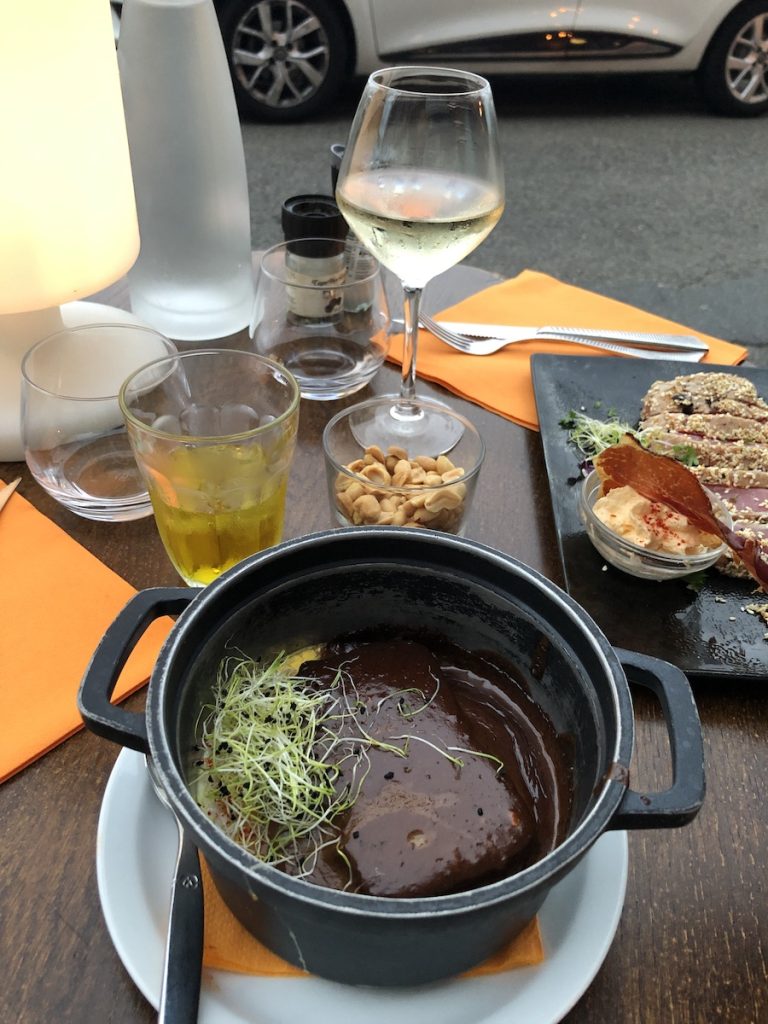
It set a suitably relaxing mood for the opening course of one particularly memorable meal. Unfortunately, I can’t tell you what it was beyond egg gratin. The photo I took of the menu was tragically obscured by a glaring light.
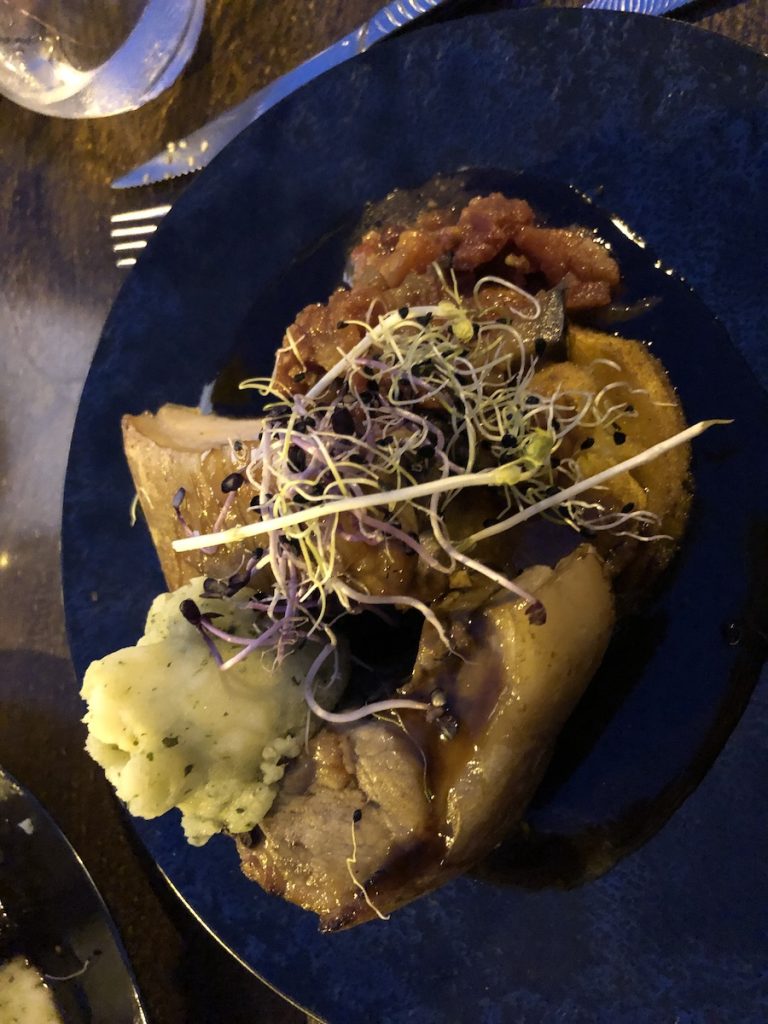
The main, however, was a succulent cochon de Lait Marine a L’Aigre Douce, placed on top of polenta and Cremeuse et Petits Legumes, paired with a lovely Bordeaux wine.
I think that’s what I’ll remember most about this lovely riverside town. Outstanding food eaten outside in the gentle late summer air.
